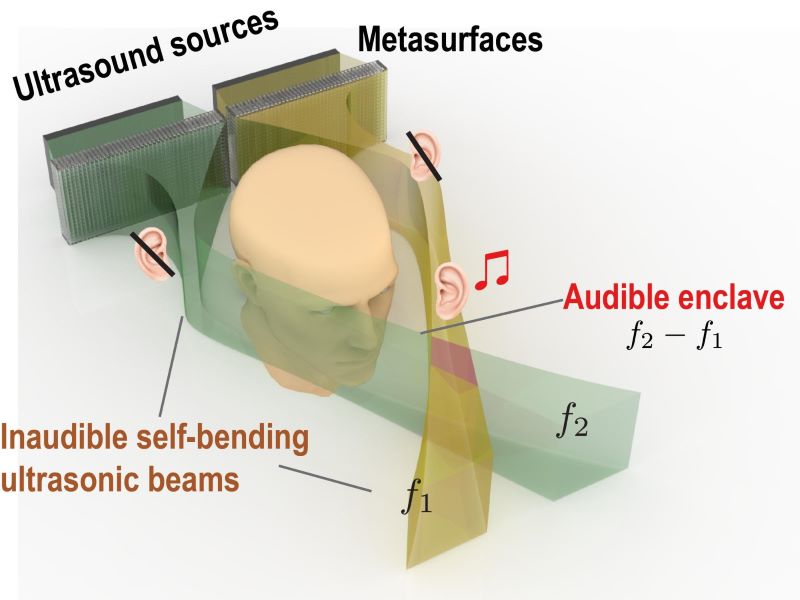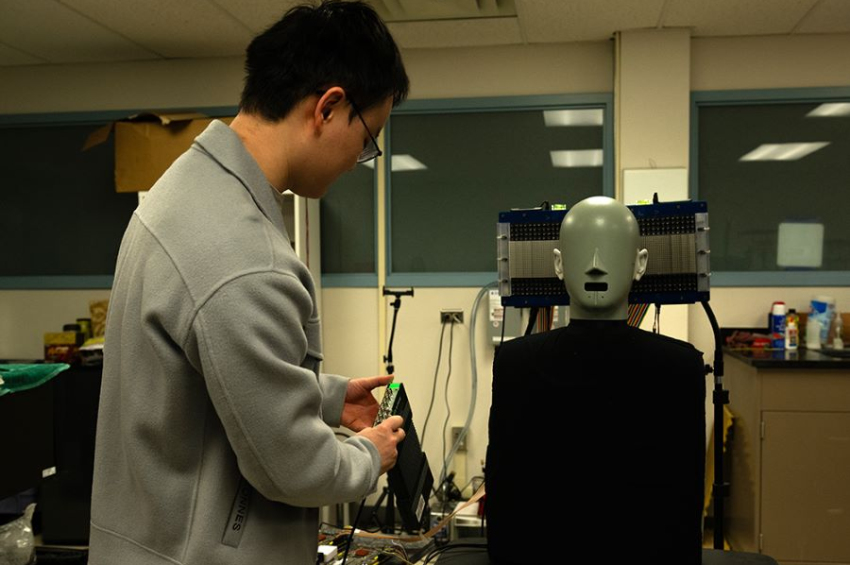New sound technology can selectively target individuals in a crowd
There’s no way someone shouts something meant for a particular individual in a crowded room and the rest can’t hear the message – unless they are deaf of wear headphones. Researchers at the Pennsylvania State University, however, made it reality by developing a groundbreaking technology that focus sound waves precisely to the intended ears – undetectable to others nearby.
As detailed in a study published in the Proceedings of the National Academy of Sciences, at the heart of this innovation are ultrasound waves — the same type used in medical imaging. These waves, which vibrate at frequencies beyond human hearing, act as carriers for audible sound. As the ultrasound beams travel, they remain silent until they reach a targeted location, where they transform into sounds perceivable by the human ear, the institution said in a statement.
More to read:
Startup builds a revolutionary mouthwear to control phones and computers
Jiaxin Zhong, the study's lead author and an acoustics researcher at Penn State, compared the discovery to a virtual headset: “Someone within an audible enclave can hear something meant only for them, while others nearby hear nothing.”

A major technical hurdle was overcoming the natural tendency of sound waves to spread out as they travel.
To address this, the researchers used two ultrasound beams vibrating at slightly different frequencies.
More to read:
[video] Paralyzed Dutch man walks again thanks to thought-controlled implants
When these beams intersect, they produce an audible sound wave equivalent to the difference between the two frequencies. For instance, beams at 40,000 Hz and 39,500 Hz generate a 500 Hz sound wave, which falls within the range of human hearing.
Another key breakthrough is the ability to bend sound waves around obstacles using "acoustic metasurfaces." These engineered materials can manipulate sound wave trajectories, similar to how lenses bend light, allowing the ultrasound beams to reach their target even if objects are in the way.
More to read:
New brain cap enables mind-controlled video gaming
Currently, the technology can generate audible enclaves up to three feet away at about 60 decibels, equivalent to a normal conversation. While still in the experimental stage, the potential applications are vast.
In public spaces, this technology could deliver personalized audio in libraries or museums without disturbing others. It might even enable large-scale noise cancellation in busy urban environments, providing pockets of quiet in noise-polluted areas.
***
NewsCafe is an independent outlet. Our sources of income amount to ads and subscriptions. You can support us via PayPal: office[at]rudeana.com or https://paypal.me/newscafeeu, or https://buymeacoffee.com/newscafe - any amount is welcome. You may also want to like or share our story, that would help us too.







